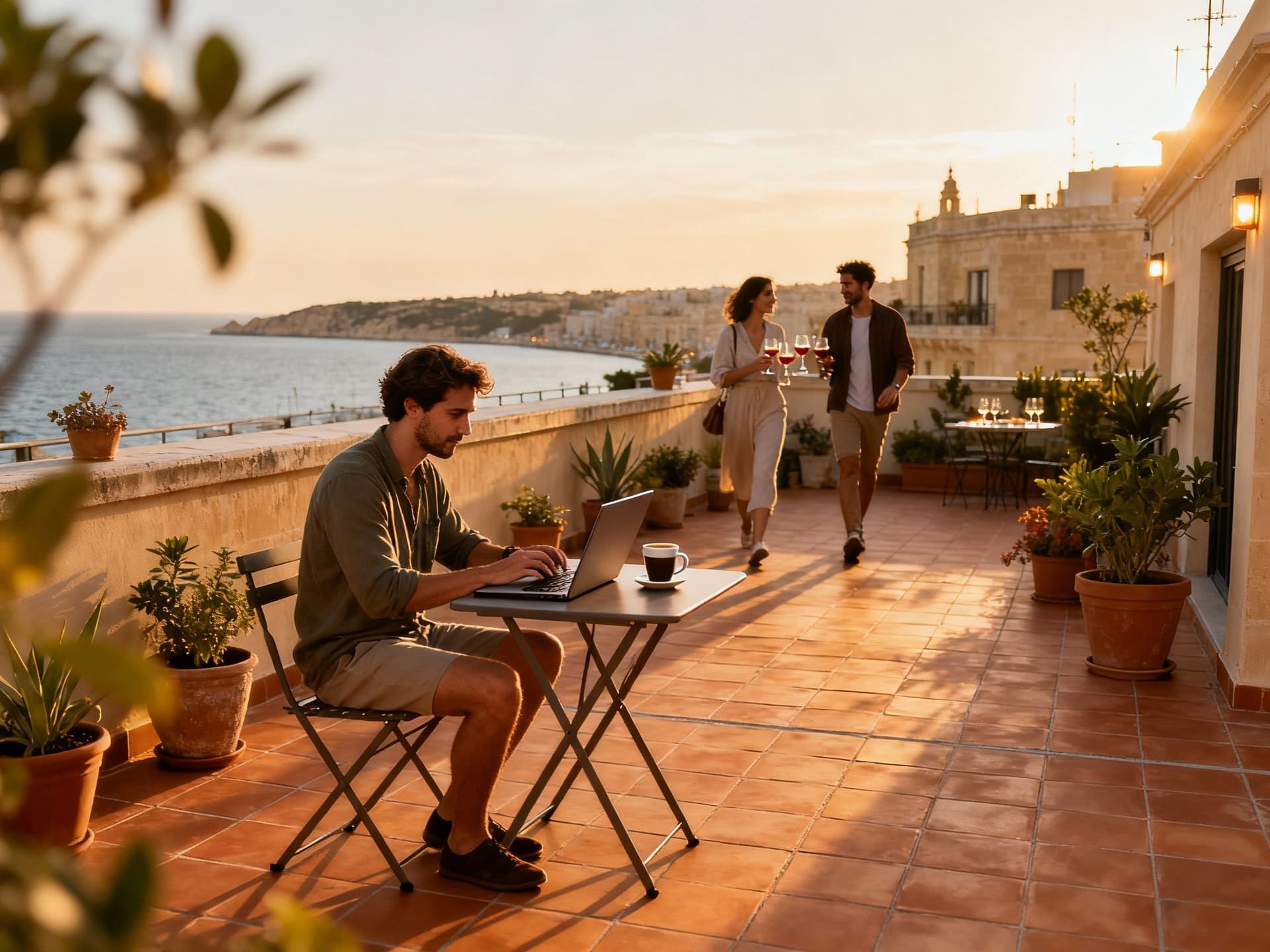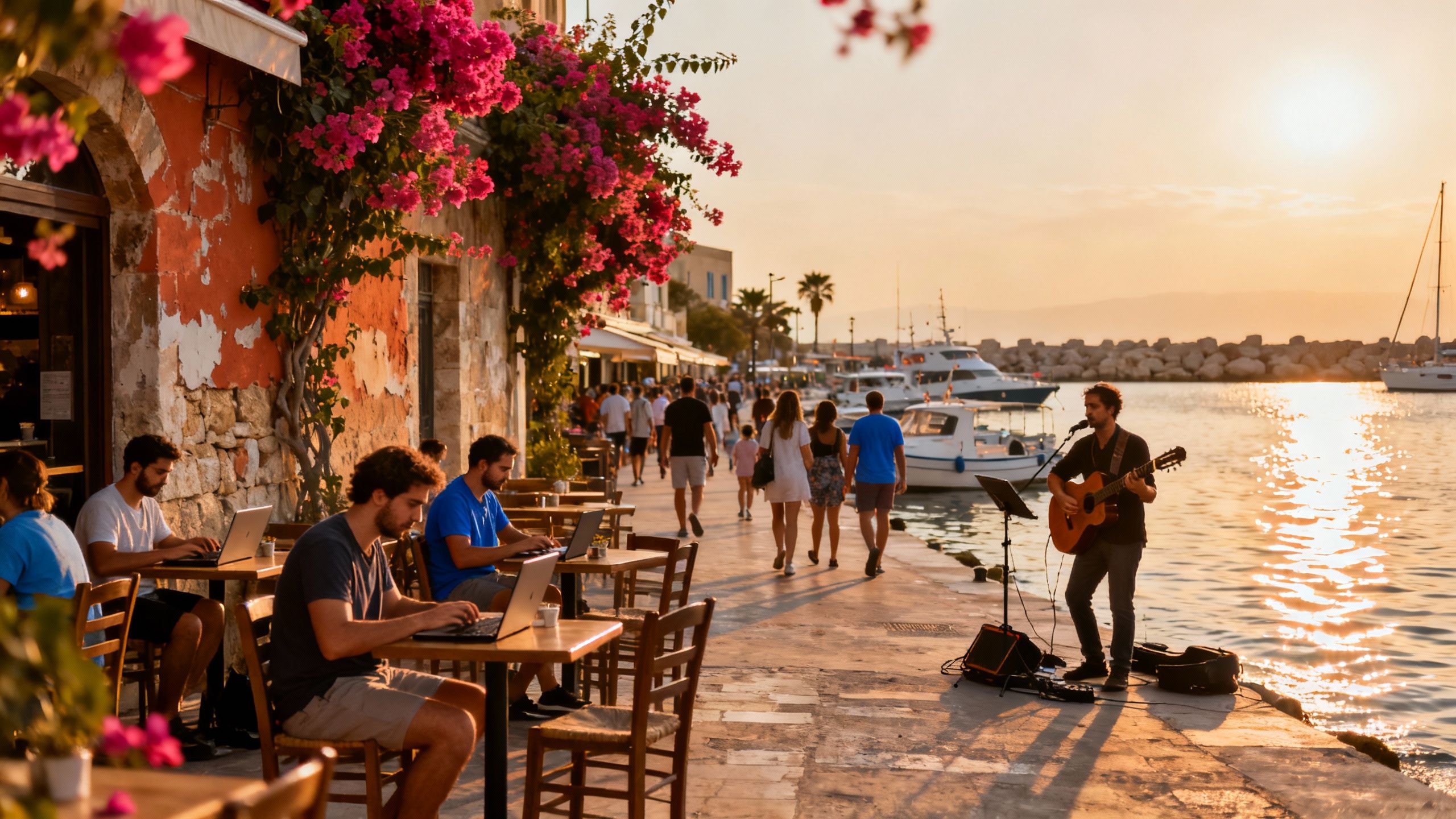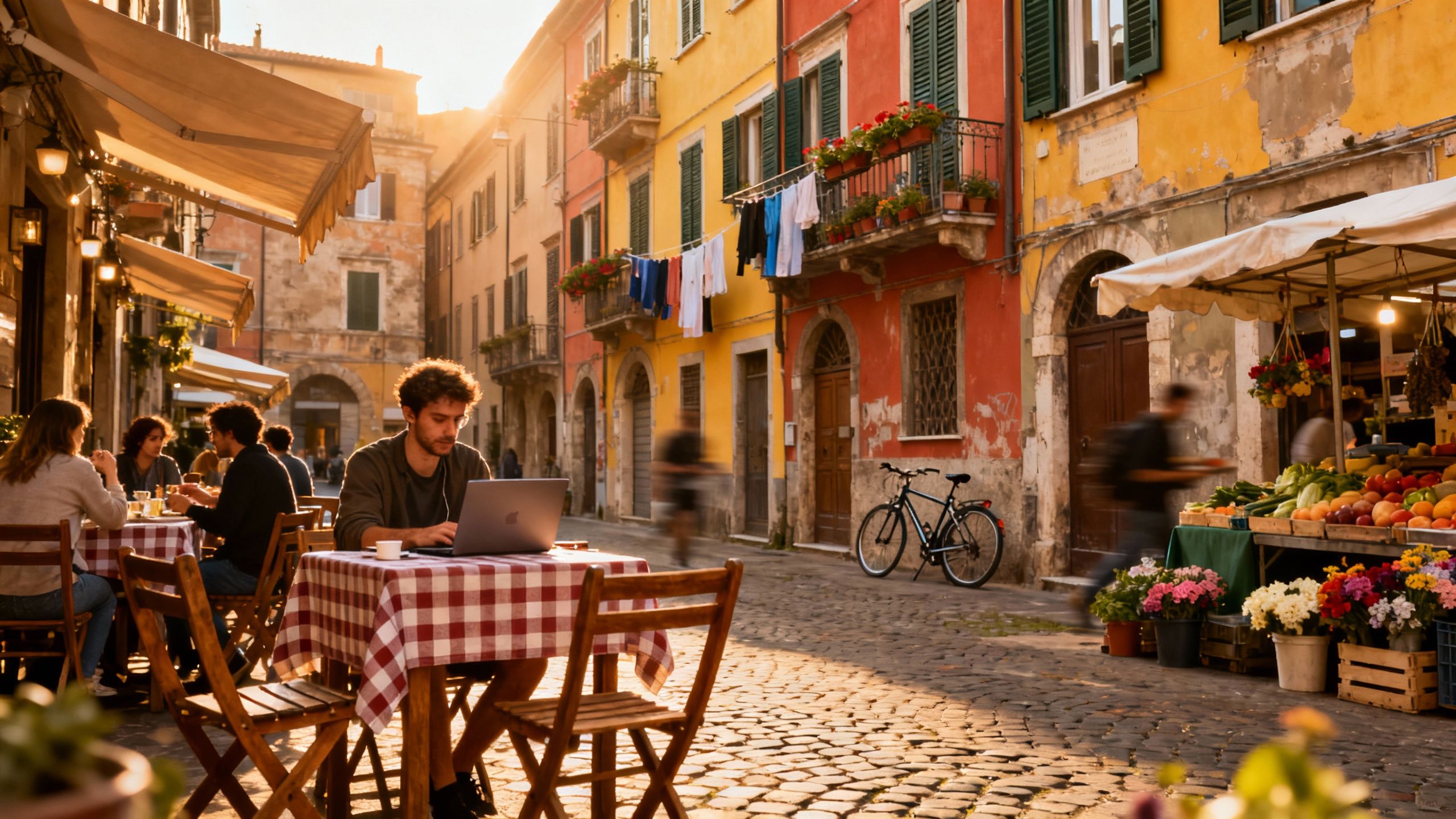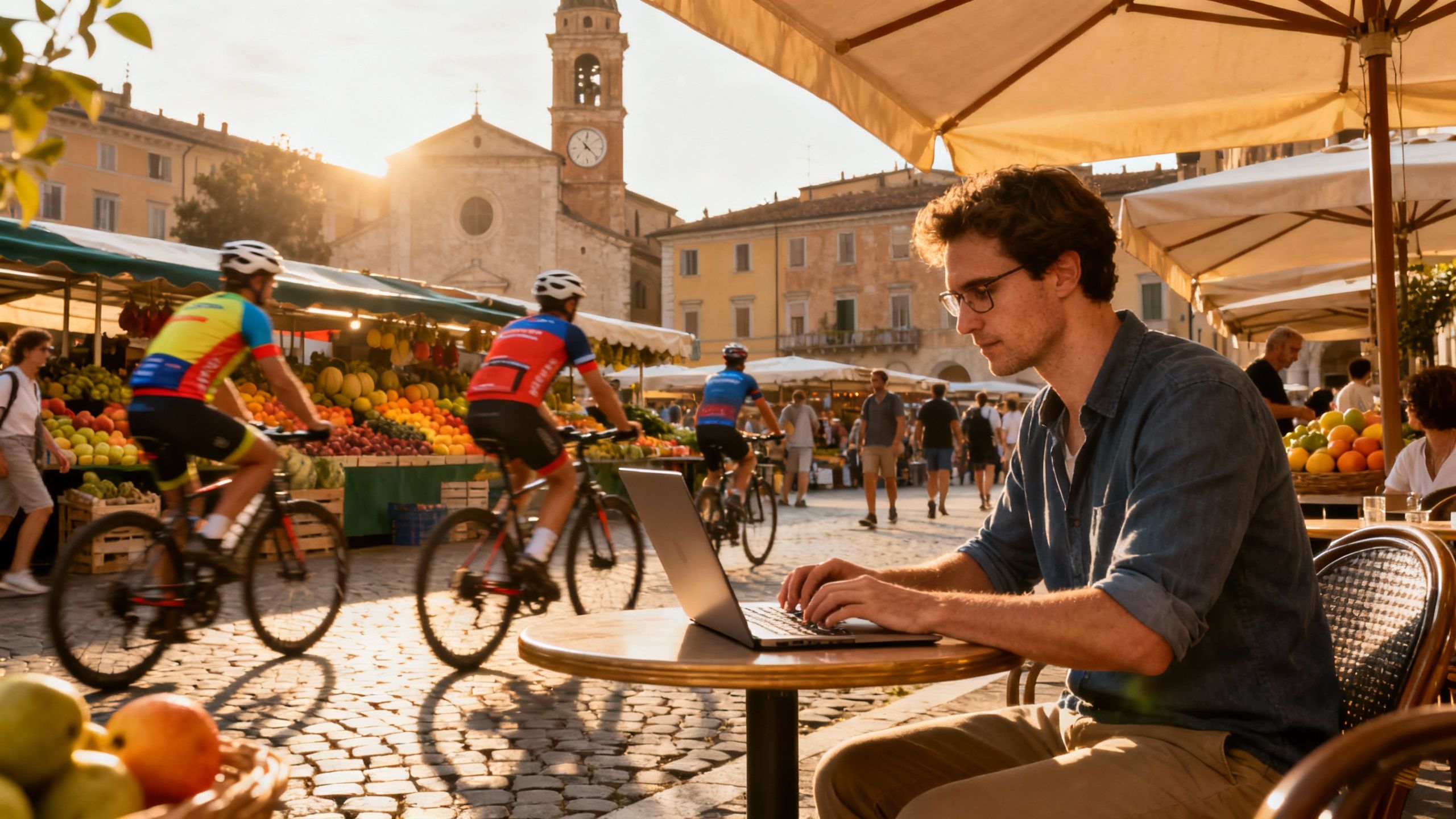Which Malta Visa Lets You Live Like a Local?
Malta offers nomad-friendly visas and compact, café-filled lifestyles — but 2025 residency changes and market shifts mean choose a visa that matches the neighbourhood you want.
Imagine starting your day with a flat-white at Caffe Cordina, then walking the limestone lanes of Valletta to an afternoon of coworking by the Grand Harbour. Malta moves at Mediterranean rhythms — loud churches, louder parties, and a small‑island intimacy where your butcher knows your name. But lifestyle and residency are tangled here: the visa you pick changes the neighborhoods open to you, the property types worth buying, and whether you'll feel like a local or a perpetual tourist.
Living the Malta lifestyle

Malta is compact — a 30‑minute drive can switch you from cliffside swims in Dingli to rooftop aperitifs in Sliema. Morning markets in Marsaxlokk spill with fish and chatter; evenings in St Julian’s thrum with bars and digital‑nomad meetups. English is an official language, which flattens many day‑to‑day frictions for remote workers looking to plug in fast and feel at home.
Valletta & The Three Cities: history-with-cafés
Picture mornings on Republic Street — espresso, sandstone facades, stray cats claiming the sun. Valletta is for people who want history outside their window: narrow alleys, micro‑bakeries, and a surprising number of compact flats with huge terraces. The Three Cities (Birgu, Senglea, Cospicua) offer calmer marinas and cheaper waterfront properties, ideal if you want harbour views without the tourist crush.
Sliema, St Julian’s & Paceville: daily convenience vs. calm
If coworking, cafés and reliable ferry commutes matter, Sliema and St Julian’s are magnetic. Sliema’s seafront walk and boutique shops make for great daytime routines; St Julian’s is where nightlife meets serviced apartments. For nomads, that means fast fibre options, dozens of cafes with power points, and apartments built for short stays — but also higher rents and a busier vibe on summer weekends.
- Lifestyle highlights you’ll actually enjoy: - Espresso at Caffe Cordina and pastries at nearby bakeries - Weekend swims at Golden Bay or a quieter Marsaskala cove - Sunset walks on the Sliema promenade with fast ferries to Valletta - Fresh fish market mornings in Marsaxlokk - Coworking days at The Hub or local Sliema spaces - Rooftop terraces in restored Valletta maisonettes
Making the move: residency that matches the life you want

Here’s the contrarian bit: the cheapest short‑term option isn’t always the lifestyle‑best. Malta’s residency routes (from digital nomad permits to the Permanent Residence Programme) each steer you toward different neighborhoods and property styles. Recent changes to residence-by-investment thresholds mean buying in central Valletta is now a premium play for long‑term residence, while renting in commuter hubs remains the flexible nomad favourite.
Property styles and how you’ll actually live
Malta’s market favours apartments and maisonettes — the NSO shows steady price growth in 2024–2025, especially for apartments near coasts and city centres. Practically, that means compact, bright interiors with terraces are the norm; outdoor space is prized and limited. If you need a home‑office with real separation, look for maisonettes or top‑floor flats with a rooftop, or properties in towns like Mġarr and Zebbug where space is more feasible.
Work with local experts who get nomad life
Choose agencies that know both visas and lifestyle fit. A good local agent will tell you which areas have fibre, which buildings allow Airbnb if you plan to rent out spare months, and which neighborhoods quiet down in winter. Ask agencies for recent internet speed checks, proximity to coworking, and whether landlords accept longer‑term nomad contracts.
- Practical steps that blend lifestyle and paperwork: 1. Decide visa route first — nomad permit, PR programme, or standard work/retention permit. 2. Shortlist areas with your daily routine in mind (coworking distance, ferry links, cafes). 3. Check fibre availability and neighbours’ noise patterns with the agent. 4. Visit in shoulder season to experience quieter life and assess true costs. 5. Lock in a rental for 3–6 months before buying to test neighbourhood fit.
Insider knowledge: what expats wish they’d known
Real talk: Malta’s investor citizenship programme was struck down by the EU Court in 2025, a reminder that national programmes shift — sometimes fast. That impacts long‑term investment certainty and neighborhood dynamics: schemes that once pushed demand and left properties vacant are now gone, changing where bargains appear. Expat communities form around practical things — schools, supermarkets, reliable ferries — not glossy brochures.
Cultural integration, language and social life
English makes starting easier, but small‑island etiquette matters: family rhythms, late dinners, and communal neighbourhood relationships. Join church fêtes, market mornings, or a local festa — those are where neighbours meet. For friendships, coworking events and language exchanges are faster routes than bar nights; locals value reliability and face‑to‑face introductions.
Long‑term lifestyle realities to plan for
If you plan to settle, consider the Permanent Residence Programme changes: higher property thresholds and updated contributions (effective 2025) alter the math for buying vs renting. That matters for families and buyers seeking long‑term stability — purchasing now may require stretching budgets but secures residency options tied to property ownership.
- Red flags and local quirks to watch for: - Titles & promises: insist on verified deeds and recent PoSAs (promise of sale agreements). - Noise cycles: bays and promenades are lively in summer and quiet in winter — check both. - Service gaps: some villages lack medical clinics or international schools; factor commuting time. - Building norms: many older properties have no lift — factor stairs into daily life. - Tourism peaks: short‑stay demand can boost rental returns but complicate neighbourhood living.
Conclusion — love the life, map the requirements. Malta rewards people who choose a lifestyle first and let residency follow. Test your rhythm in a rented flat near the cafes and coworking spaces you’ll actually use; then let a local agent and immigration adviser align the visa route to that life. If you want a place where your coffee shop knows your name and the sea is never far, Malta may be a small island with big rewards — just pick the residency path that preserves the life you fell in love with.
Danish investor and relocation advisor focusing on Portugal and the Algarve; loves coworking culture and expat networks.


